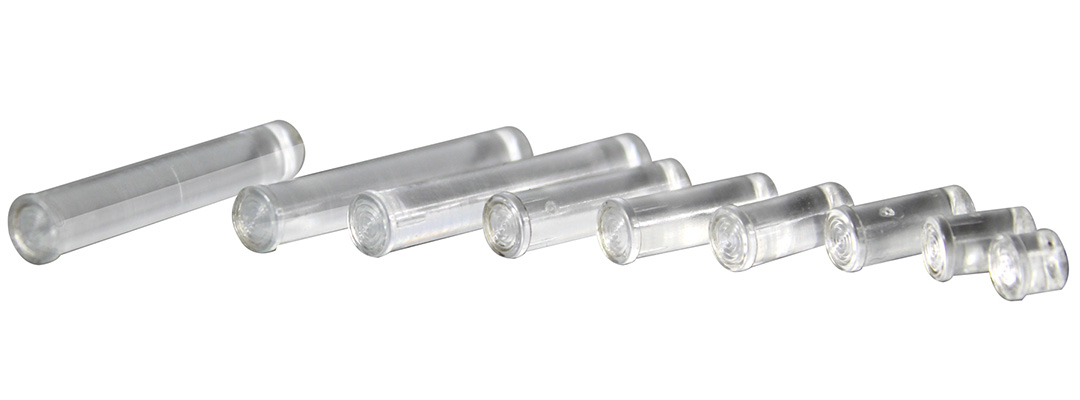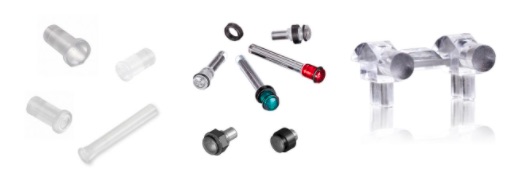
What are Light Guides and What Do They Do For Me?
A Light Guide is a device that allows light to travel from a source as large as the sun or as small as an LED, to a point at some predetermined distance. In a successful light guide application, this is accomplished with minimal losses.
What are the Most Efficient Light Guide applications?
The most efficient Light Guide applications are those that have a controllable source and use optical grade acrylics such as acrylic resin, polycarbonates, epoxies and glass. Controllable sources that are most often used in Light Guide applications are LEDs. Led and Light Guides create effective transmission of light from a PCB to a controller or dashboard as well as a number of additional applications. Efficient light guide systems will also provide the following design elements:
- Effective Coupling – Without effective coupling from the source to the Light Guide, your system will be inefficient. Typical light guide applications will include a flux coupling to an LED device. The light guide entrance must be either flat (for surface mounted LEDs) or concave and contoured to match the mounting surface.
- Special lenses for Light guides can be manufactured to suit various types of LEDs. Typically, surface mounted LEDs will have a built-in lens and the prepared end of the Light guide is inserted inside the mount to make the connection.
- Efficient Transmission – Efficient transmission is dependent on a variety of aspects including the Light Guide material, polished connection surfaces, and effective capture at the receiving end.
- Moisture Sealed – Many outdoor or hazardous applications will require moisture and dust sealant to provide an effective transfer of light through your chosen light guide.
- No conduction or transfer of electrostatic discharge (ESD) pulses – LED circuits, especially when mounted on a PCB, are susceptible to losses and damage from electrostatic discharge (ESD) pulses. An effective light guide removes this risk and also the need for an additional ESD protection circuit.
- Immunity to electromagnetic interference (EMI) – For light guides that are implemented into industrial environments, Electromagnetic Interference (EMI) exists, as there are various devices that are emitting electromagnetic waves. An effective Light guide will eliminate this interference.
VCC provides an extensive variety of light guides called LitePipes, which are patented with the most efficient and technologically advanced design elements. Whether you have an indoor, outdoor, high interference or hazardous application, we have the right light guide for your project. Contact us today for more details and selection assistance from our qualified engineers.








